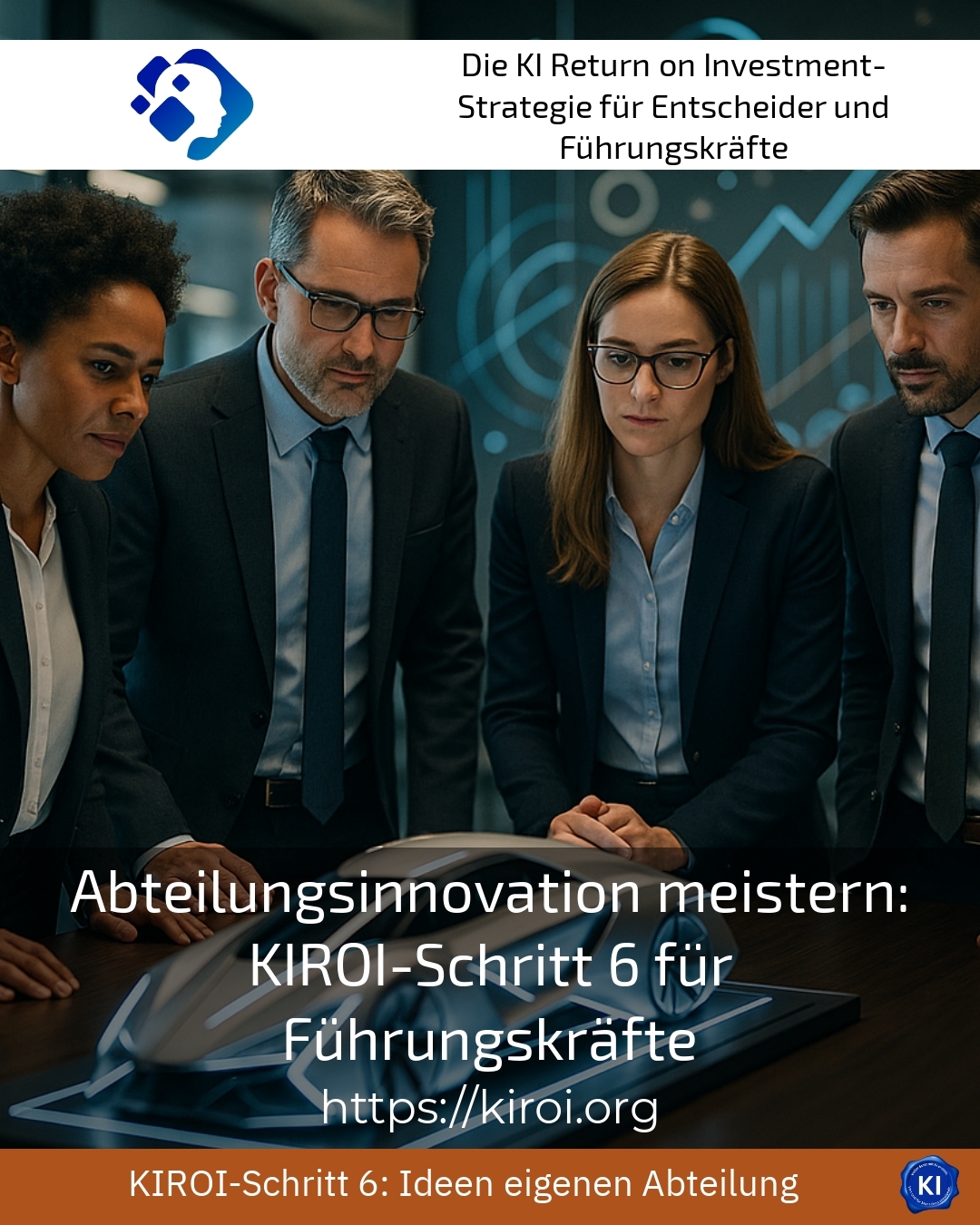Departmental innovation is one of the most important challenges facing managers today. In the sixth step of the KIROI approach, precisely this aspect is analysed intensively and systematically supported. For managers, this means focusing their team and internal organisation on innovations and effectively managing innovation. In doing so, transruptions coaching helps to support and sustainably organise projects relating to departmental innovation.
The role of leadership in departmental innovation
Managers act as drivers of departmental innovation. They support change and provide the impetus that is essential for change. Practical examples show how this works:
In a medium-sized company in the IT sector, agile methods were used to establish a culture of open communication within the department. This enabled digital solutions to be developed and tested more quickly.
In one production company, the manager promoted targeted training in innovation methods such as design thinking. This enabled the team to develop new product ideas that were precisely tailored to customer needs.
A service company used peer-to-peer workshops to share expertise across departments and jointly advance innovation projects. The managers supported this exchange by setting clear targets and providing resources.
KIROI step 6: Creating momentum for sustainable innovation
The focus of this step is on building a culture of innovation that has a lasting effect. Transruption coaching helps to create the right framework conditions. Specific tips for managers:
- Encourage interdisciplinary teams to integrate different perspectives.
- Set clear target and performance agreements for innovation projects.
- Allow room for experimentation and trying out new ideas without fear of failure.
Here are some practical examples: A communications department implemented regular innovation meetings in which employees could present their ideas. This increased motivation and led to several practical improvements.
An internal innovation competition was held in a logistics centre in which teams proposed innovative process optimisations. The winners were given time and budget resources to implement their ideas.
A digital platform was introduced at a financial services provider to systematically promote the exchange of suggestions for improvement. Managers evaluated the contributions and supported the implementation of the most promising suggestions.
Practical example: Sustainable innovation support
BEST PRACTICE with one customer (name hidden due to NDA contract) In a medium-sized production department, transruption coaching was used to reorganise the existing innovation steps. We supported the management in introducing agile methods, promoting dialogue between the teams and establishing a culture of continuous learning. As a result, the department was able to launch innovation projects more quickly and notice a higher level of employee motivation, processes became more efficient and customer-oriented solutions could be realised more quickly.
Tools and methods to support departmental innovation
Various innovation methods can be used specifically in the context of departmental innovation. Three frequently used approaches:
- Design Thinking: This user-centred approach brings together different perspectives across departments. This enables managers to recognise problems from the customer's perspective and develop innovative solutions.
- Brainstorming and brainwriting: These techniques promote creativity in the team and ensure a broad collection of ideas. This results in a variety of inputs for further steps.
- Prototyping and testing: The rapid creation of prototypes makes ideas tangible. This makes it possible to obtain feedback at an early stage and improve innovations step by step.
A software company used design thinking to organise the introduction of new modules in a customer-oriented way. A mechanical engineering company used brainwriting in workshops to systematically record different technical solutions. A marketing department relied on the rapid development of prototypes to test campaign ideas in a timely manner.
Challenges and opportunities of departmental innovation
The process of departmental innovation requires managers to overcome various challenges. Clients often report the following points:
- Overcoming resistance to change in the department.
- Maintaining a balance between day-to-day business and innovation work.
- Identify the right time for change.
At the same time, this opens up opportunities such as a stronger sense of togetherness within the team, greater commitment and sustainable competitiveness. Managers who focus on departmental innovation can thus establish sustainable structures and develop their company in a stable manner.
My analysis
Departmental innovation is a complex process in which managers play a central role. KIROI Step 6 helps to provide the necessary impetus for sustainable change and to strengthen the culture of cooperation. In this context, transruption coaching is suitable as targeted support to overcome individual challenges and keep innovation alive in the team. Practical examples show that the conscious use of proven methods such as design thinking, brainstorming and prototyping together with targeted leadership is effective. This enables departments to strengthen their innovative power and respond better to market changes in the long term.
Further links from the text above:
Innovation management: How ideas become innovations
The 7 most important innovation methods
Innovation management - finding suitable methods
For more information and if you have any questions, please contact Contact us or read more blog posts on the topic Artificial intelligence return on investment here.















